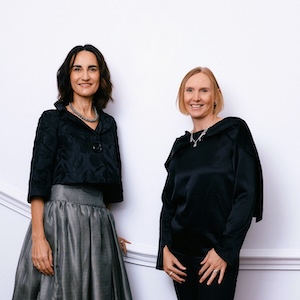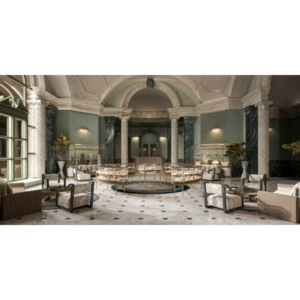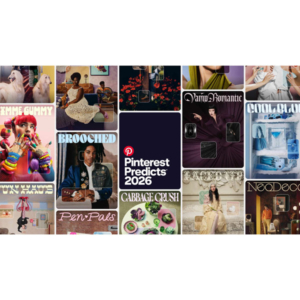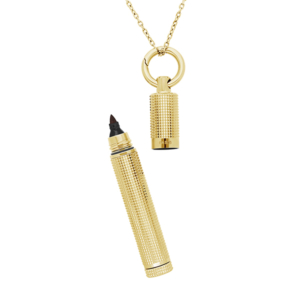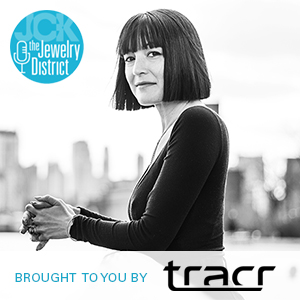
On this week’s episode, JCK editor-in-chief Victoria Gomelsky and news director Rob Bates catch up with Brooklyn-based designer Bliss Lau, who channels her Hawaiian upbringing, Chinese heritage (on one side of her family), and innovative artistry into her self-titled fine jewelry collections. Bliss looks back at early-career challenges, including when a popular influencer attempted to appropriate her designs, and the game-changing high point when Beyoncé wore one of her pieces. She discusses her ethics-first approach to sourcing and highlights her latest collection celebrating Mayan jade.
BONUS: Hear an exclusive mini interview with Howard Stone of Jewelers Mutual Group about safeguarding your store during the holiday season.
Listen Now
Presenting sponsor: Tracr
Sponsor: Jewelers Mutual
Episode Credits
Hosts: Rob Bates and Victoria Gomelsky
Producer and engineer: Natalie Chomet
Editor: Riley McCaskill
Plugs: @jckmagazine; tracr.com; jewelersmutual.com; blisslau.com
Show Notes
02:45 How Bliss Lau started out
07:40 From bags to body jewelry
09:05 A unique marriage proposal
12:07 Imitation tame
17:39 The video that changed everything
20:13 Putting ethics first
24:08 In celebration of jade
27:35 Holiday security tips from Jewelers Mutual
Show Recap
How Bliss Lau started out
Victoria and Rob welcome Bliss Lau, owner of the eponymous fine jewelry line in Brooklyn, N.Y. Born in Hawaii, Lau grew up surfing and has a deep love of the ocean. But she was also a self-proclaimed misfit, wearing all-black in a place famous for its colorful floral prints. Ten days after graduating from high school, she headed to New York City to attend Parsons School of Design.
Initially, Bliss planned to design shoes, but accessories soon piqued her interest and she chafed at Parsons’ focus on clothing design. In an act of polite defiance, she created the minimum number of looks required for her senior thesis collection, but lavished her mannequins with handbags, belt bags, and shoulder bags. To her delight, “It” store Opening Ceremony bought her collection.
From bags to body jewelry
Victoria is curious about how Bliss segued from accessories to jewelry. The designer says handbags were always a challenge for her creatively because her approach was aesthetic, while bags are ultimately utilitarian—meant to hold possessions.
“I love creating things that are interesting and conceptual,” she says. “Handbags were really complicated for me to design because I had to live within the confines of people’s perception of space.”
Around 2006, Bliss turned her attention to body jewelry. Making body chains triggered a “creative explosion” for her—she could design pieces “that make no sense.”
A unique marriage proposal
Rob asks about Bliss’ unusual way she got engaged. Her fiancé had a leather-bound sketchbook made and presented it to her on bended knee while the pair were visiting the Metropolitan Museum of Art. The book was meant to hold her designs for the engagement and wedding rings of her dreams.
At the time, Bliss had already made a foray into jewelry with her Kaleidoscope ring—a four-part design that a wearer could alter for different looks. It’s still a cornerstone of her collection. The ring was meant “not to be a sculpture that lives on the body but something you could wear as if you were wearing clothing,” Bliss explains. “I call it a wardrobe of jewelry. You can take the four pieces out and interlock them and change them so that you can wear them [to] express yourself in a different way each day.”
Her wedding ring is equally inventive. It features a patented sliding mechanism to hold the engagement ring in a surrounding double-banded ring. The symbolism of connecting the rings and realizing your body is holding them together is intentional, she says. “I married my opposite,” Bliss says. “We are the yin and the yang.”
While designing is always exciting, it was a huge challenge in the days before CAD. And it prompted Bliss to do some serious soul-searching. “What am I doing making body chains?” she asked herself. “What am I doing making something that doesn’t last forever?”
Exploring the virtually endless colors and textures of gemstones during her first trip to Tucson reinforced this line of thinking. “Once I had that experience, I couldn’t imagine wanting to make anything other than fine jewelry,” Bliss says.
Imitation game
Rob mentions an incident early in Bliss’ career that taught her the importance—and the challenges—of protecting her intellectual property. In the early 2000s, body chains were a bold new concept. Bliss spent years trying to sell hers to stores, and finally she got a flurry of orders. No sooner did these come through than an A-list influencer tried to appropriate Bliss’s concept. Every order canceled as a result.
“Magazine editors were best friends with her, so they covered her,” she recalls. “I was silenced.” As a young designer without a powerful network, “it was infuriating.”
She sought help from Volunteer Lawyers for the Arts, who blocked the imitator from shipping the copycat products. “Thank God for kind people donating their time,” Bliss says. “I’m so grateful.”
The video that changed everything
A celebrity played a much more positive role in Bliss’ life a short time later. Rob mentions the career-changing moment in 2013 when Beyoncé wore one of Bliss’ body chains in her “Drunk in Love” video. “It completely transformed people’s perception of what my brand was,” says Bliss.
Putting ethics first
Victoria asks the tagline “conscious fine jewelry,” and Bliss explains, “It’s about being really intentional with all of my choices. We have the ability to make so much impact with where we buy our gold and how we choose our stones.”
She uses Fairmined gold and is looking into Single Mine Origin gold. She works with responsibly mined and cut gemstones, heritage gemstones, post-consumer recycled gemstones, and audited carbon-neutral lab-grown diamonds. She also has a transparency review for her fabricators, which she developed with Christina Miller, to confirm that they are committed to responsible business and fair labor practices.
Bliss marvels at the how artisanal gemstone mining, which employs 40 million people around the world, supports local communities. To her, projects like Moyo Gems can draw young talent concerned about sustainability and responsible purchases into the jewelry industry.
In celebration of jade
The newest collection from Bliss Lau, who sells direct-to-consumer except for a longtime partnership with No.3 Fine Jewelry in San Francisco, features Mayan black and lavender jade from Guatemala.
Knowing the jade’s provenance resonated for Lau. “There’s a lot of opacity in our industry,” and traceability was a challenge with jade from other sources, she says. “I was really excited to have a direct line of purchasing jade and jadeite. This is the last jade of the Maya.”
Any views expressed in this podcast do not reflect the opinion of JCK, its management, or its advertisers.
- Subscribe to the JCK News Daily
- Subscribe to the JCK Special Report
- Follow JCK on Instagram: @jckmagazine
- Follow JCK on X: @jckmagazine
- Follow JCK on Facebook: @jckmagazine
